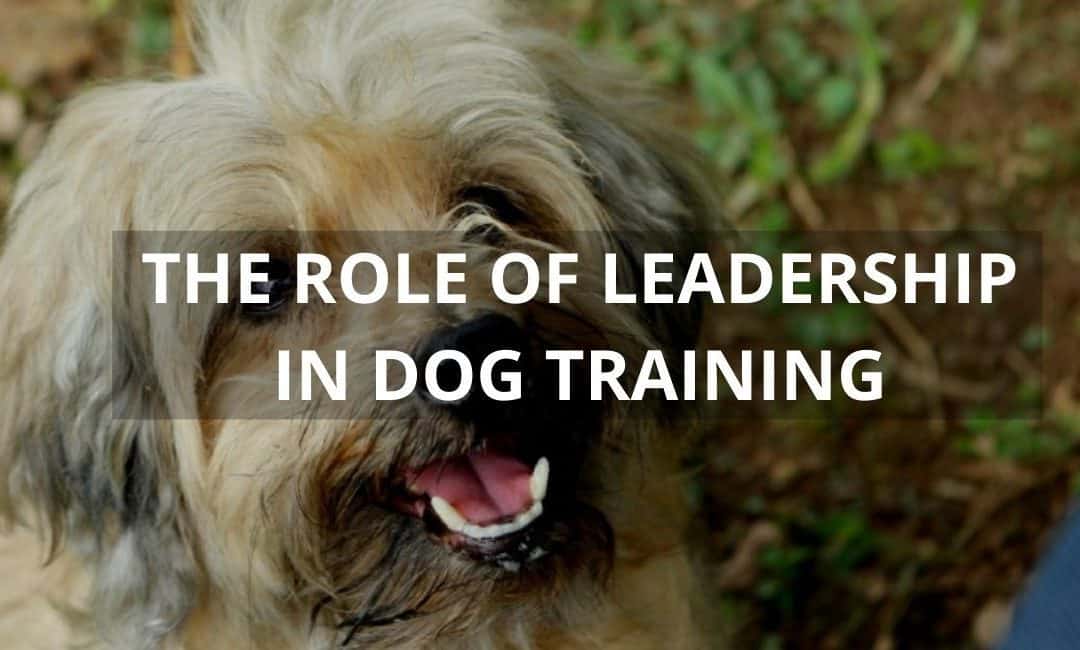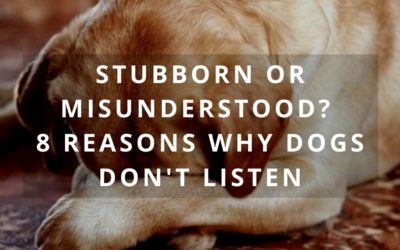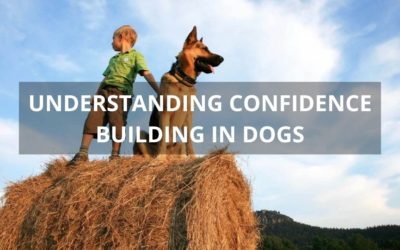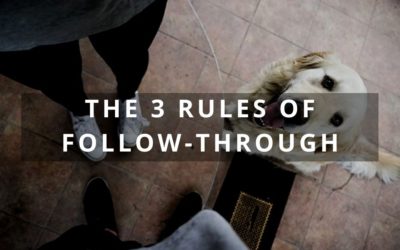Lack of leadership can lead to a host of dog behavior problems. But what makes a good leader? And how does the average dog owner become a leader in their dog’s eyes? Learn how leadership works in dogs, why it’s important, and how to be an effective leader without bullying your dog.
Dogs are social, “pack”, animals, genetically programmed to group life, where every pack member has a place and a role. In each group, there is a leader or a lead pair, and everyone else in the group has a rank below them.
All dogs expect that there will be some obvious leadership in their “pack”, and most will look to their human family for guidance, rules, and protection.
It’s usually when we give mixed signals – or clear signs of weak or missing leadership – that dogs start to show stress over lack of a leader, and problems arise.
Problems caused by lack of leadership in dog training
Common behaviors often linked to lack of leadership are:
- over-protectiveness and territoriality
- possessive behavior, where the dog “guards” people and valued items
- age-inappropriate rowdy, raucous, or destructive behavior
- nervous and neurotic behavior and
- manipulative, attention-seeking behaviors.
Will a dog’s behavior always suffer when there is no clear leader?
The answer would have to be no. Naturally even-tempered dogs in low-stress households may not show any issues with absent leadership. If your dog is one of those, count your blessings!
Dog owners who regularly train and reinforce good behavior will tend to have a little more leeway when it comes to standard leadership exercises. And dogs whose lives are carefully scheduled and managed may have less opportunity to act out when leadership is lacking.
But in general – and it is a generalization – a dog will be more cooperative and willing, more secure and at ease in his life and skin with a calm, confident, clear leader in his life.
Doesn’t leadership in dog training imply force and intimidation?
What follows are some common ways that dogs look for leadership in their pack, and ideas on how to fairly, non-violently increase your leadership status in your dog’s eyes.
You’ll notice that there is no mention of stare-downs, alpha rolls, scruff-shakes, poking, prodding, hissing, or the like.
That’s because those are gimmicks.
Don’t be fooled into thinking that you have to act like a drill sergeant or a schoolyard bully to be your dog’s leader.
Leadership in dog training has nothing to do with volume, force, or intimidation. These are the tools of weak leaders – or those who know no better.
A good, effective leader teaches with patience and empathy. A good, effective leader inspires trust and confidence. Through basic training, and accepting your role as leader for your dog, you set yourself up as the person your dog looks to – and trusts – to make the right decisions.
Now, let me say, you won’t necessarily need to employ all the suggestions below.
Some dogs seem to cry out for a clear, obvious leader to follow. Others are satisfied if you’re not blatantly handing them the keys to the kingdom.
Know your dog and her temperament. And feel free to experiment: pick and choose the ones that appeal to you, and see which are a good fit.
Because what works for you and your dog may be completely different than what works for your neighbor or father-in-law or me. Just sayin’!
And if you do decide to go all out, I’d suggest implementing them gradually versus all at once. It will be easier on both your dog and you if you adopt one new habit a month, rather than trying a crash course approach that feels more like Marine Boot Camp.
So, here we go!
Rules for Leadership in Dog Training
Know Your Own Mind
When your dog brings you the ball, do you throw it for him, “just to get some peace”?
When your dog bumps your hand, do feel obligated to pet him?
When your dog says it’s time for a walk, do you run and grab the leash?
The fundamental right of canine leaders is to decide what they want to do, when they want to do it.
This is a biggie to dogs! Deciding to be in control of your own actions – being in charge of when you start, when you stop, even if you want to play/pet at all – is an incredibly powerful way to show leadership. And it’s a nice way to teach your dog respect, patience, and polite behavior all at the same time.
Once on your walk, does your dog drag you from one exciting spot to the next?
Part of being in control of your own actions includes dictating the particulars.
You don’t need for your dog to walk behind you, or even right at your side. (This is an unfortunate popular misunderstanding of canine pack dynamics.).
Your dog can most certainly stop, sniff, and enjoy his walk.
You can simply and effectively demonstrate leadership to your dog on walks by deciding the particulars – when you go and when you stop, how fast you walk, what direction you take, and when you go home!
Teaching your dog to walk politely and responsively on leash takes patience – but it will make walks more pleasant for both of you, and is awesome leadership.
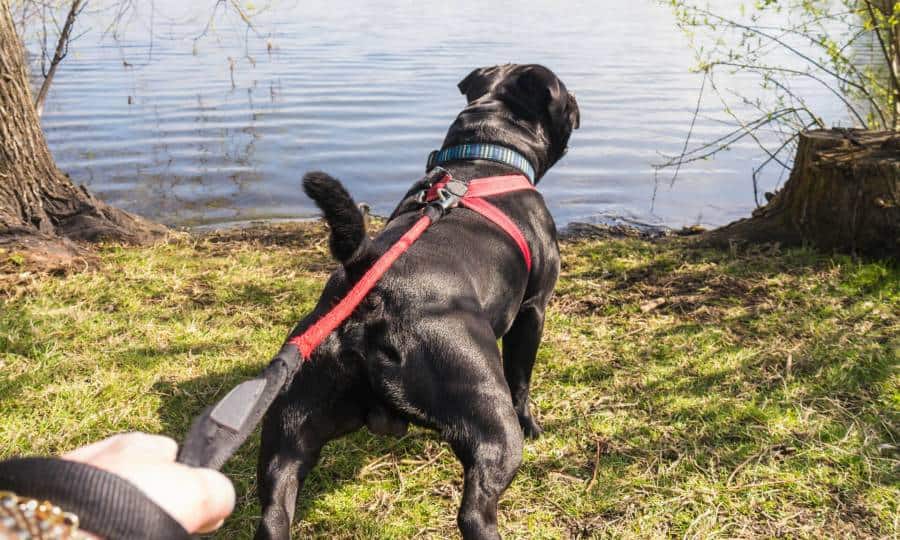
Proceed Your Dog into New Territories
Does your dog blast past you to get through doors and gates, and to go up and down stairs?
“Getting there first” is a important leadership concept for many dogs.
Teaching your dog to wait to be allowed to go through doors, and up stairs, is a wonderful, simple way to help your dog see you in a new, more positive light. Besides being excellent leadership, this is safe and polite behavior.
When going through doors together, do you have to go out before your dog? No, not really. Go first when it is convenient, but make sure you train to the point where you can if you want to.
And if you have a pushy, bossy, constantly-challenging dog, you should probably decide to want to most of the time.
Lead the Game
Does your dog like to turn a game of fetch into a game of keep away?
Does your dog steal things, teasing you to chase him to get it back?
Most owners do not realize that chase is one of the most important games dogs and puppies play to determine status. And the thing to remember is: the top dog always leads the chase.
Turn the game around – have your pup chase you in play! If your pup tries to tease you into chasing him, do what a confident, alpha dog does – ignore it or walk away.
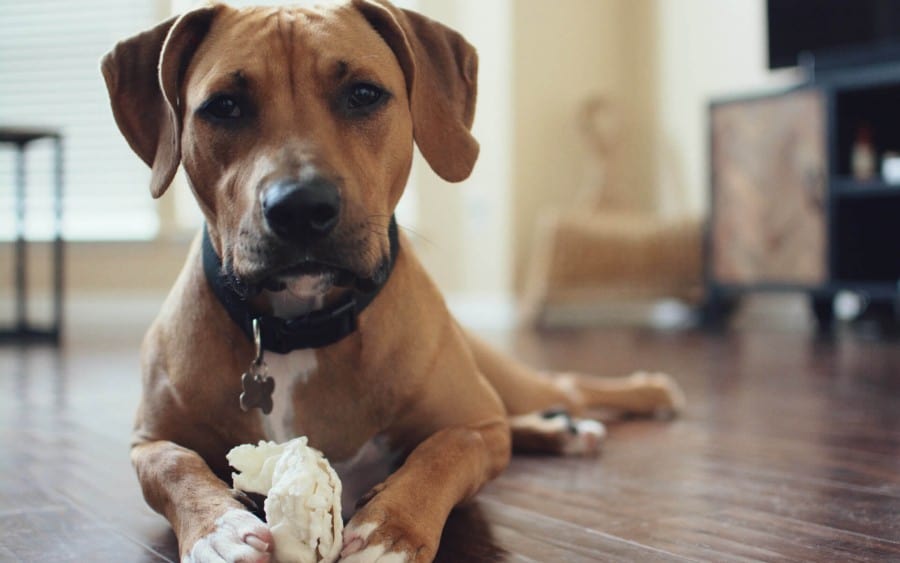
You Bought It – You Own It
Does your dog growl if you get too near his bone, rawhide, dinner bowl?
Does he growl at strangers, or even family members, if they get too near you?
A strong leader reserves the right to claim possessions as her own. And possessions can be just about anything: toys, beds, bones, food, even people!
Do not misunderstand – this does not mean out-threatening your dog over valued possessions. Be smart, be safe, and be a good leader – teach your dog early on to politely defer to you around items of interest.
[If your dog already has a problem with guarding possessions, it’s important to start fresh and re-teach him how to relinquish items, starting with very low-value ones. If you’re unsure how your dog will react, or are not confident approaching this challenge on your own, find a good positive trainer to help you.]
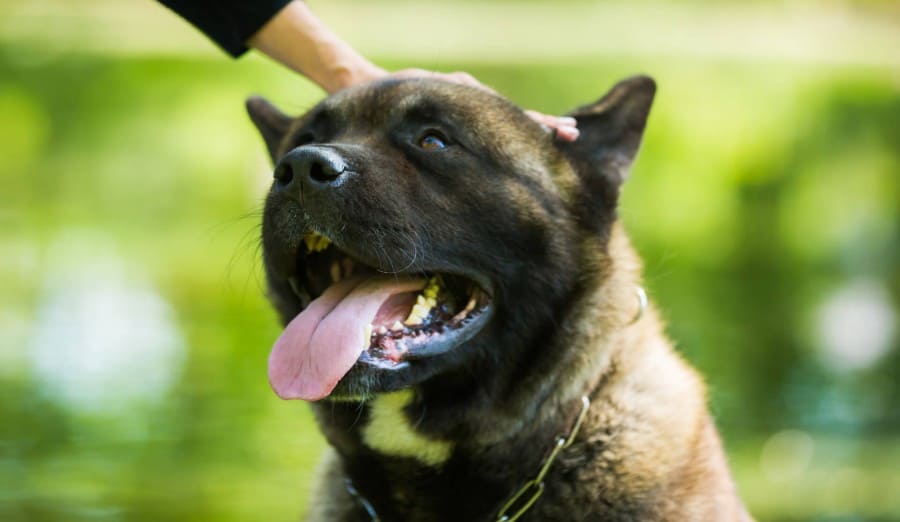
Groom and Examine
Does your dog fuss, squirm, roll around, growl, mouth, or even bite, when you try to brush him, clean his ears, or trim his nails?
Does he duck his head or move away when you go to pet him on the head or shoulders?
In the dog world, a lower ranking dog typically will allow a higher ranking pack member to examine and “groom” him.
This acceptance begins in the litter when puppies acquiesce to Mom caring for her pups. In older pups and adults, it can include licking ears, gentle nibbling (AKA “flea biting”), and investigating even very sensitive parts of the body.
Now just because your dog squirms, do not assume it means your dog has a problem with authority. Acceptance of handling by people usually must be taught.
By gently teaching your dog to accept handling and physical examination, you set yourself up as a good leader in your dog’s eyes. As a bonus, you also reduce your dog’s stress at the groomer, vet, and during those inevitable, unpredictable times when you need to examine your dog, as in now!

Take the High Ground
Does it seem like your dog isn’t happy unless he is lying, sitting, or standing on top of you?
Affectionate dogs love close contact, but the dog who always constantly seeks to gain height over you may also be trying to demonstrate that his status is higher than yours. In the dog world, much like in the children’s game King of the Mountain; the one on top wins!
Teaching your dog a consistent Off command (i.e. “paws on the floor”), to be used at your discretion (not just when your dog feels like getting off), can make a huge difference in whether your dog perceives you as leader, or follower.
Define Your Territory
When out walking your dog, do you follow him around while he marks territory at every tree and bush?
Inside, does your dog “claim” the bed, couch, or certain areas of the house as his, then refuse to move when you ask?
Canine leaders reserve the right to set the boundaries of the pack’s territory, and to proclaim certain areas as off-limits to other pack members.
Teaching your dog that certain areas are “human only”, and training a reliable response to commands such as Off (“paws on the floor”) and Wait (an immensely useful boundary command), are easy ways to help your dog understand his proper place in the pack.
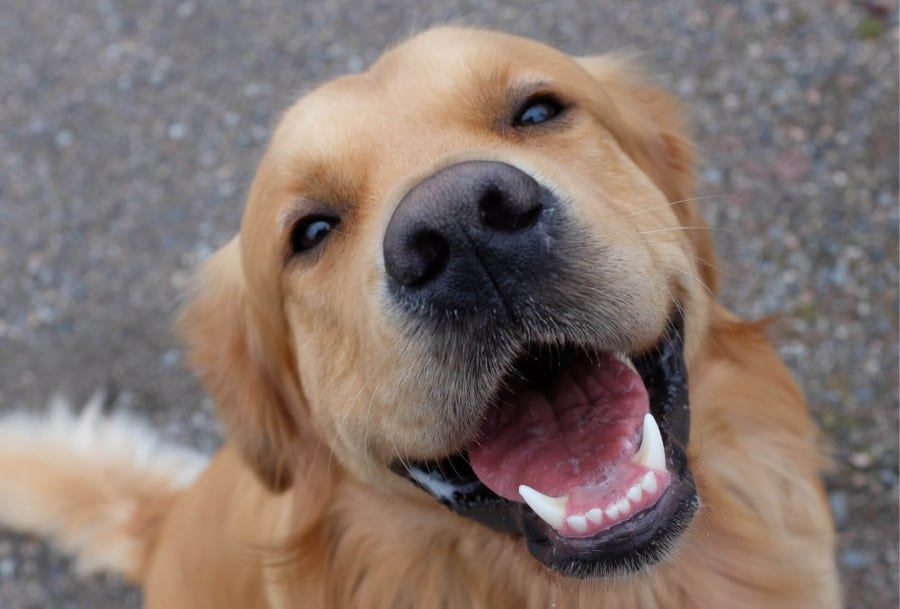
Put on Your Game Face
Finally, keep in mind the following fundamentals of leadership in dog training. Some may take a little play-acting, and the occasional leap of faith, until you’re comfortable with the role.
Structure is Not an Option. In the dog world, it’s the pack leader’s job to make – and enforce – the rules. Decide on some simple, straightforward rules that work for you and your family, teach your dog how to comply, and reward him for his cooperation. Now everybody is happy!
Attitude Counts. When interacting with your dog, remember that canine leaders maintain an upright body posture, and an attitude that communicates quiet self-confidence.
This doesn’t mean you can’t get down and play and be silly with your friend. Just remember to fall back to this posture anytime your dog’s behavior indicates lack of control or cooperation.
Set the Example. When the pack leader is calm, confident, and in control, so are the pack members. A dog who feels safe and secure is far less likely to over-react to the normal stresses of daily life.
Your dog will look to you to see how you are reacting in any new situation, and take his cue from your behavior. So be a good leader – be aware of your own attitudes, feelings, and reactions, and set the example for your dog!
Conclusion
As pack animals that have evolved to work and live cooperatively with humans, dogs do best with a predictable, stable leader calling the shots.
Kind, compassionate leadership stabilizes relationships, clarifies rules, and lightens the burden of the family dog.
There is no (or very little) mystery to leadership. But it takes initiative and should be proactive, not reactive.
Put some thought into your dog’s behavior. Are there any gaps or holes in your leadership that could be filled?
If your dog has any problem behaviors, consider filling those holes. You might be surprised at how much it helps.
I hope you enjoyed and learned from this article. If you did, please share it with your friends!
Best,
julie
(bio)
